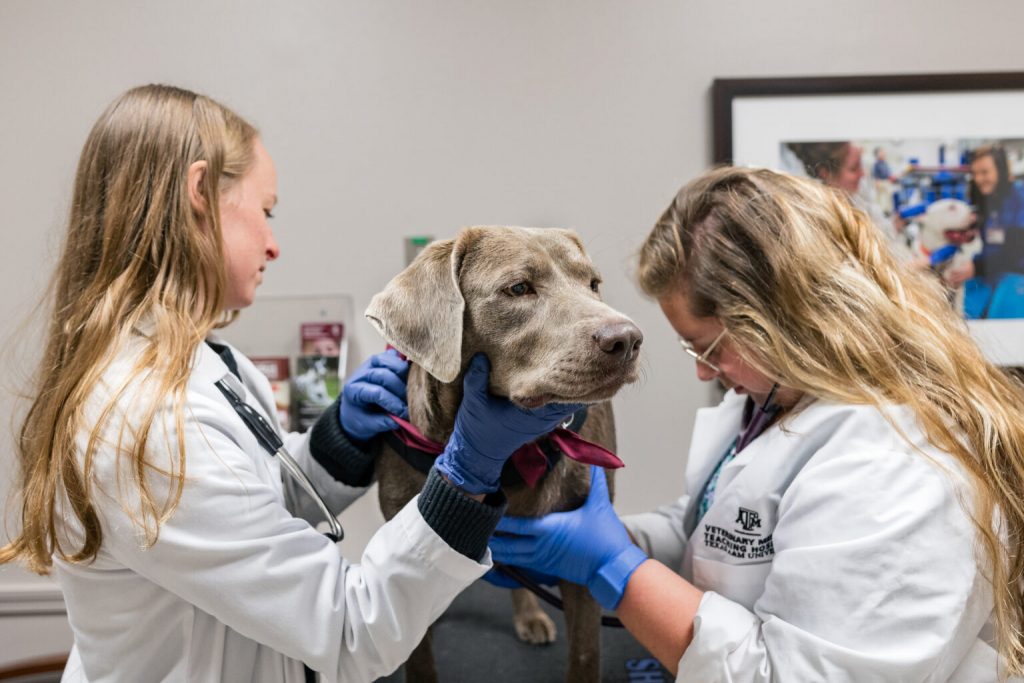Welcoming a puppy is a happy and exciting occasion for pet owners, save for the extra challenging parts of making sure they are well fed, kept busy and entertained, and more especially, healthy.
Such was the case for Anthony and Clara M. Simpson, when they brought in Lanie, an English silver Labrador retriever, to their home in 2022. “There is nothing better than coming home to Lanie, who is always happy to see us and makes us smile, regardless of the kind of day we have had,” shares Clara in a story published on the Texas A&M University website.
However, a month after taking the dog home, the couple observed it to be unusually “lethargic and uninterested in just about everything.” This prompted them to take Lanie to Gulf Coast Veterinary Specialists (GCVS), a large emergency clinic in Houston, TX, where the then three-month old puppy was diagnosed with juvenile cellulitis (puppy strangles)—an autoimmune disease typically affecting puppies up to six months of age—and hypertrophic osteodystrophy (HOD)—an auto-inflammatory disease of the bones.
“Dr. Rhonda Dixon, the doctor who treated Lanie at GCVS, is a Texas A&M alumna,” Clara shares in a statement. “She was incredible and diagnosed Lanie after just one day and said having puppy strangles and HOD at the same time was a very rare thing. Even so, she reassured us that both issues were treatable, and we were able to bring Lanie home soon after.”
The puppy was reportedly in good health and was doing well until another incident happened on Sept. 9, 2023. “It was a Saturday afternoon, and Lanie would barely open her mouth. She always wants to eat, so we knew something was going on,” Anthony shares.

Lanie was initially taken to the local emergency clinic, where it was determined the dog had not ingested anything harmful and was recommended to be taken to the Small Animal Teaching Hospital (SATH) at Texas A&M University for further diagnostics.

The dog was initially seen by the SATH Emergency & Critical Care Service before being referred to Dr. Jessica Herman, a resident on the Small Animal Internal Medicine service.
“It was up to us to try and establish the underlying cause of the swelling and fever she was experiencing,” Herman says. “The difficulty in this diagnosis lies in the location of her swelling, which was under the chin, where we have salivary glands, nerves, blood vessels, muscles, lymph nodes and more; it is a very busy area that participates in supporting and moving the head, chewing, swallowing, breathing, and talking—or, in Lanie’s case, barking. We had to figure out if her swelling was a tumor, an abscess, or a foreign body like a sock.”
A CT scan revealed the swelling was located internally, and a surgical biopsy was performed by Dr. Chanel Berns to help identify what was causing the inflammation.
After the biopsy, Lanie’s condition was diagnosed and confirmed to be canine sterile steroid-responsive lymphadenitis, which Herman explains may be related to puppy strangles.
“Given her history of autoimmune diseases, it is safe to say that her immune system is not entirely normal,” she said.
Lanie’s veterinarians determined the best steroid treatment for her condition and began seeing a rapid reduction in her swelling after application.
“All three of the diseases Lanie has had in her lifetime are rare, but the sterile steroid-responsive lymphadenitis is very uncommon,” Berns says. “Lanie’s case was so dramatic because you could see from one day to the next how quickly she was either getting worse or better with her swelling.”

“Thankfully, once we knew what we were treating, she had a very quick response to the treatment,” she adds. “We started to see results in reducing her swelling within days, and if you see her now, you’d never know she experienced an autoimmune disease, much less three.”
For more information on Lanie’s story, visit the Texas A&M University’s website.
